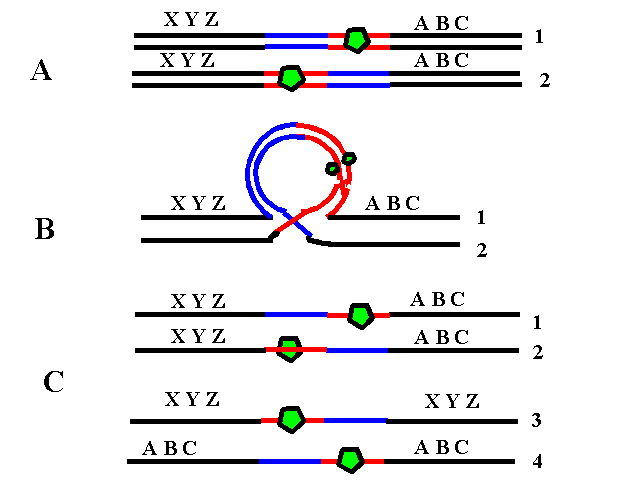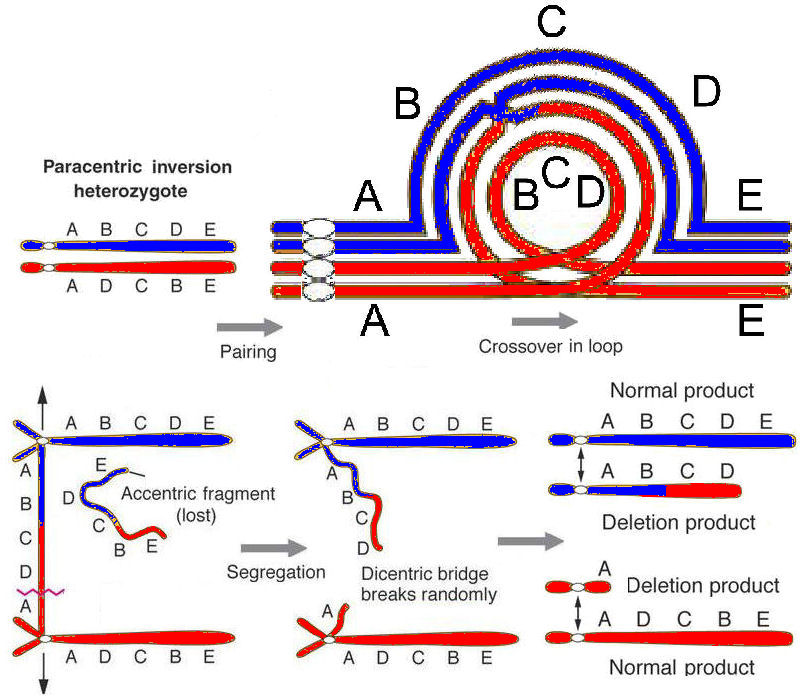Inversion
Inversion Assignment Help | Inversion Homework Help
Inversion
In inversions, a section of the chromosome becomes changed by rotation through 180degrees. The order of the genes in the section is thus reversed. As in translocations, only the arrangement of the genes is changes, not the number of genes. Organisms may be either homozygous or heterozygous for an inversion.Inversions arise by the formation of loops on a chromosome. Breaks may occur at the point of intersection of the loops. Reunion of the broken ends take place in a new combination, and an inversion results. Inversion heterozygotes achieve pairing by the formation of loops or bulges.

Inversion are of two types, per centric and Para centric. In percentric inversions the inverted segment includes the centromere, while in paracentric inversions the centromere is outside the inverted segement. When crossing over occurs within the inverted segment of a paracentric inversion, then acentric and decentric chromatids are formed during meiosis. The dicentric chromatids have two centromeres and are connected together by a bridge. If crossing over occurs within the loop of a pericentric inversion, then the resulting chromatids have duplication and a deficiency.

For more help in Inversion please click the button below to submit your homework assignment.